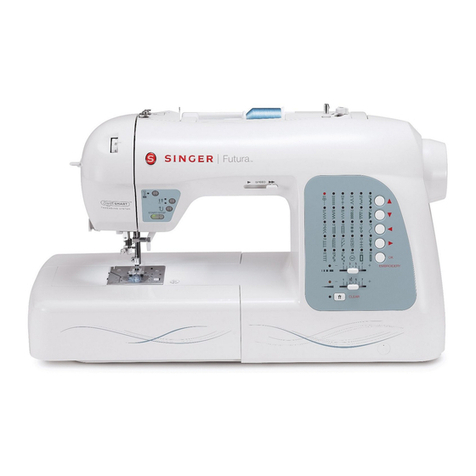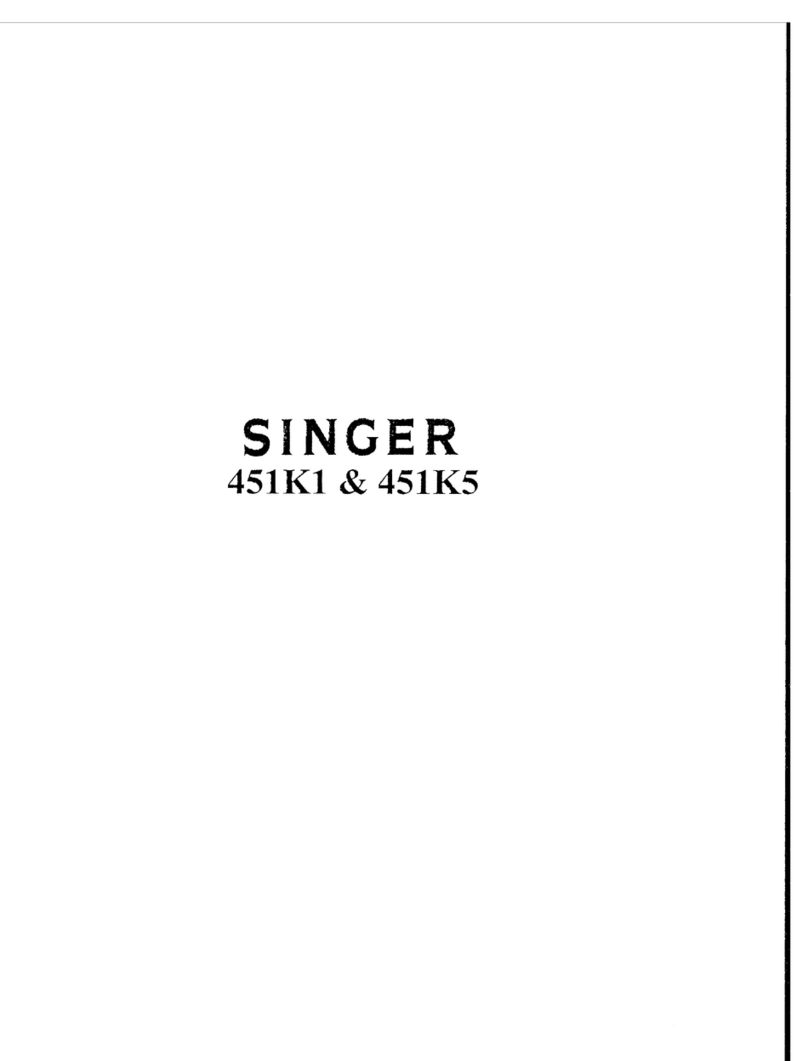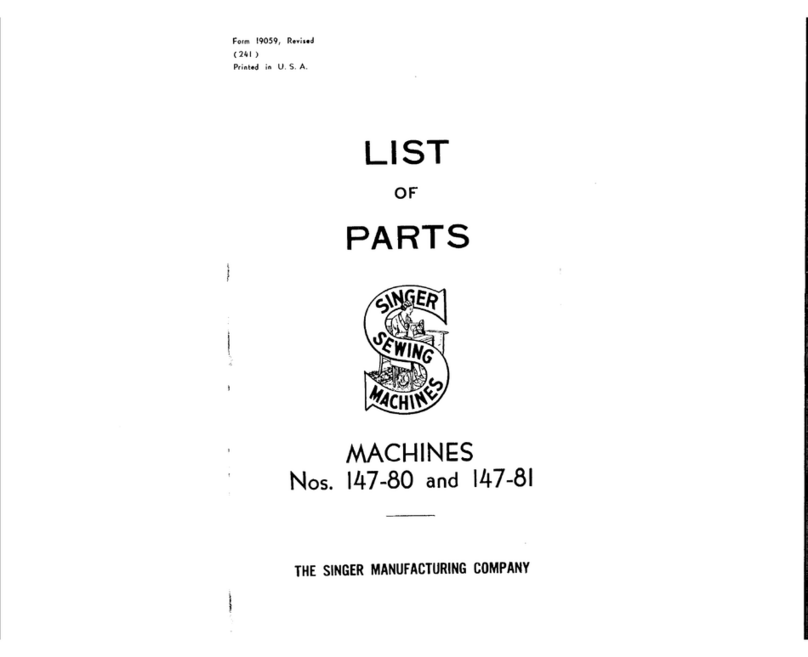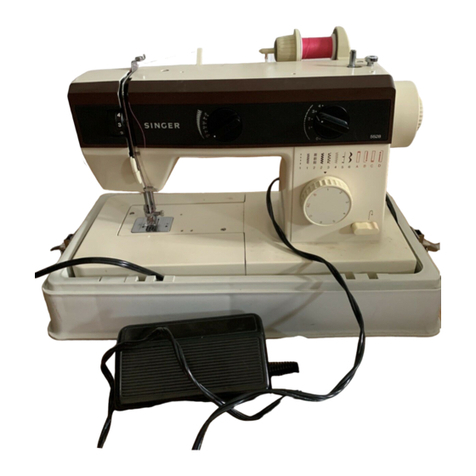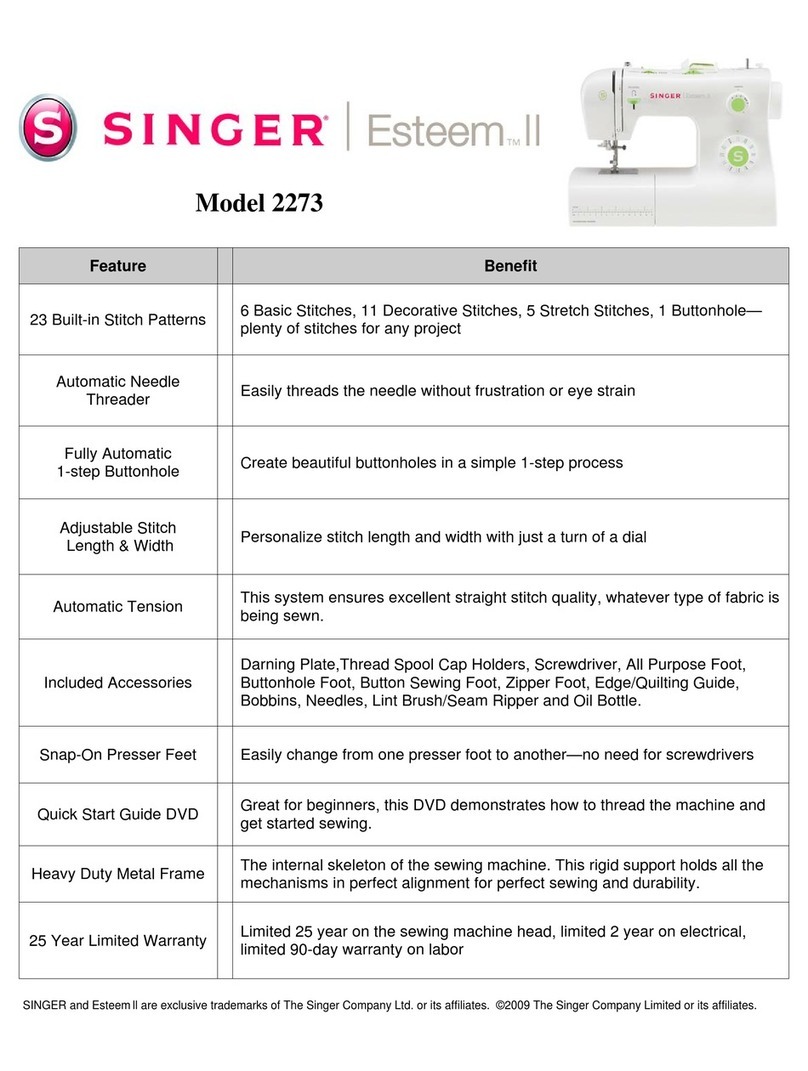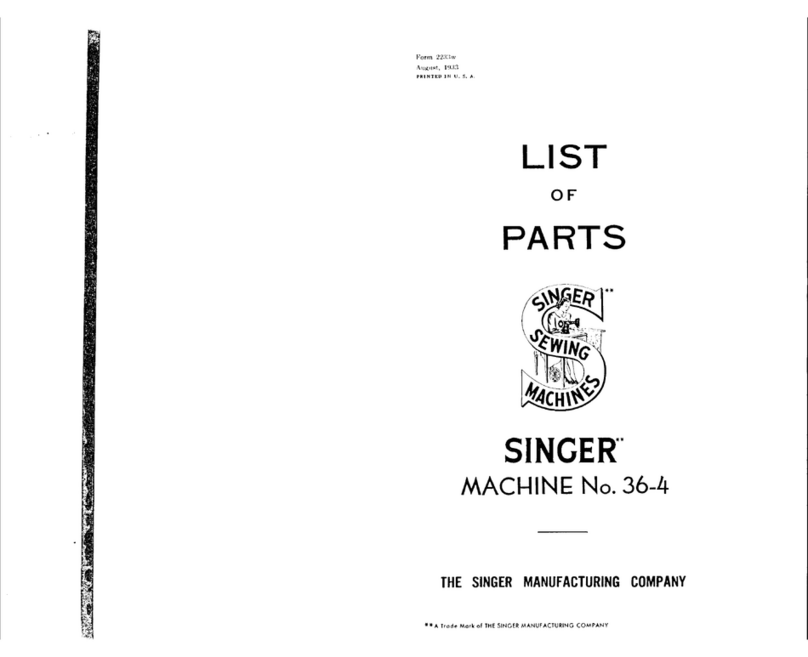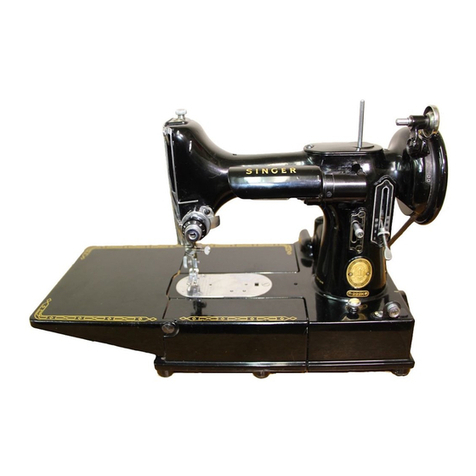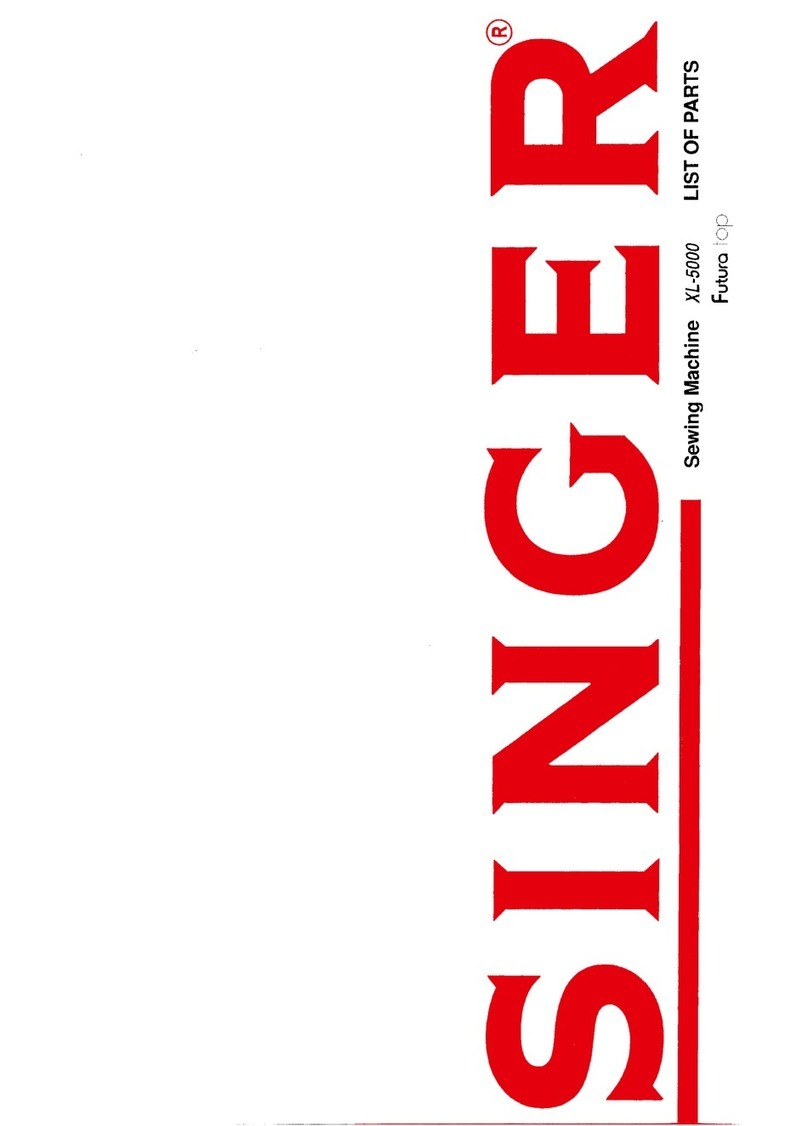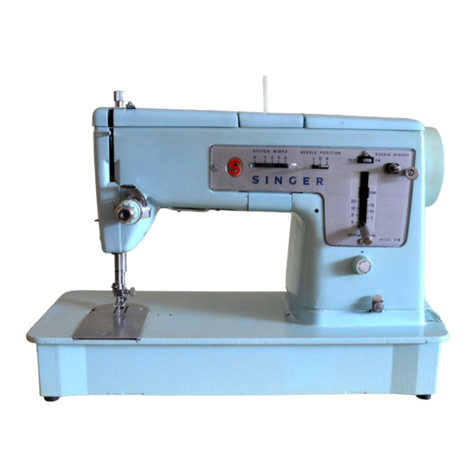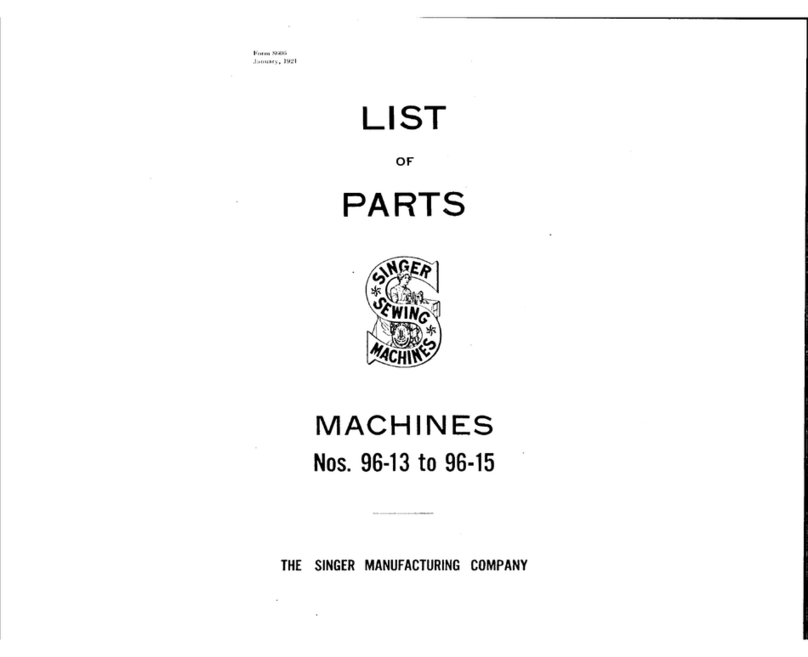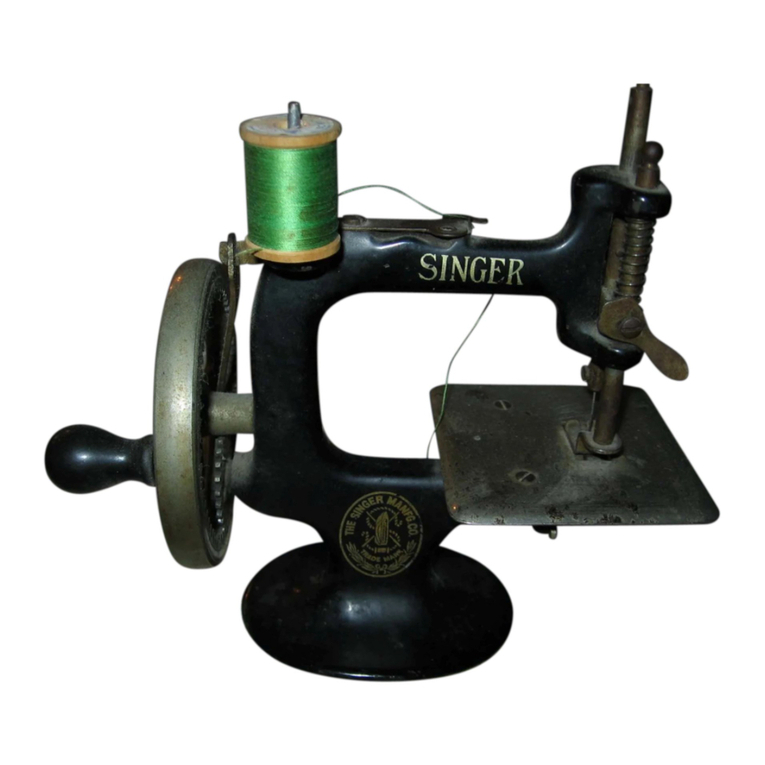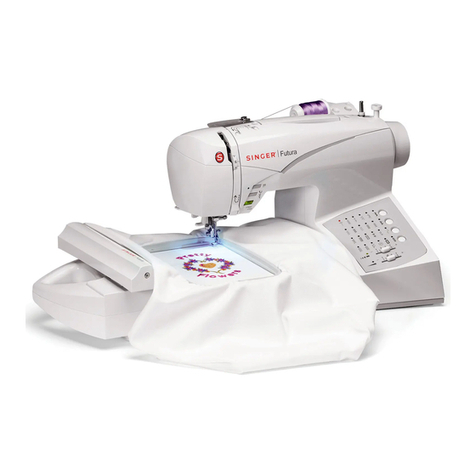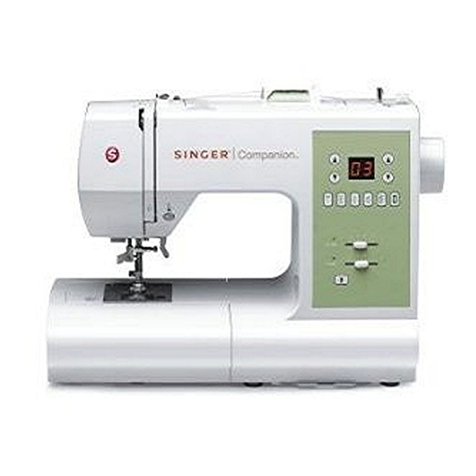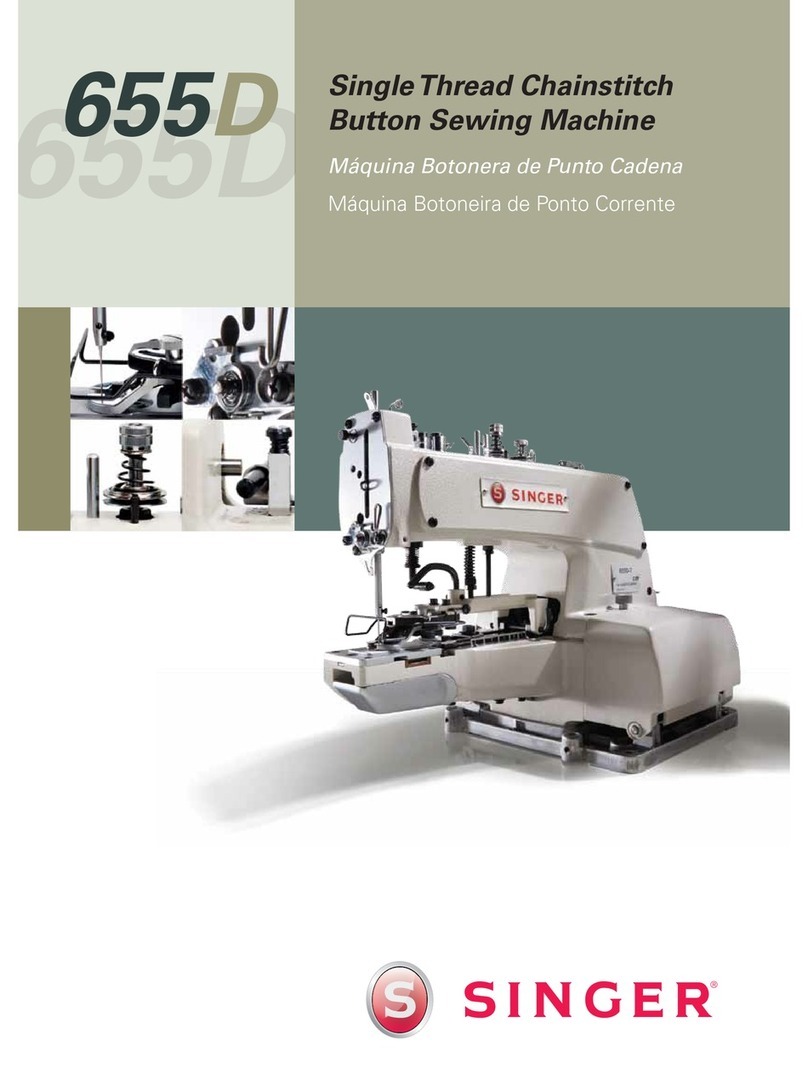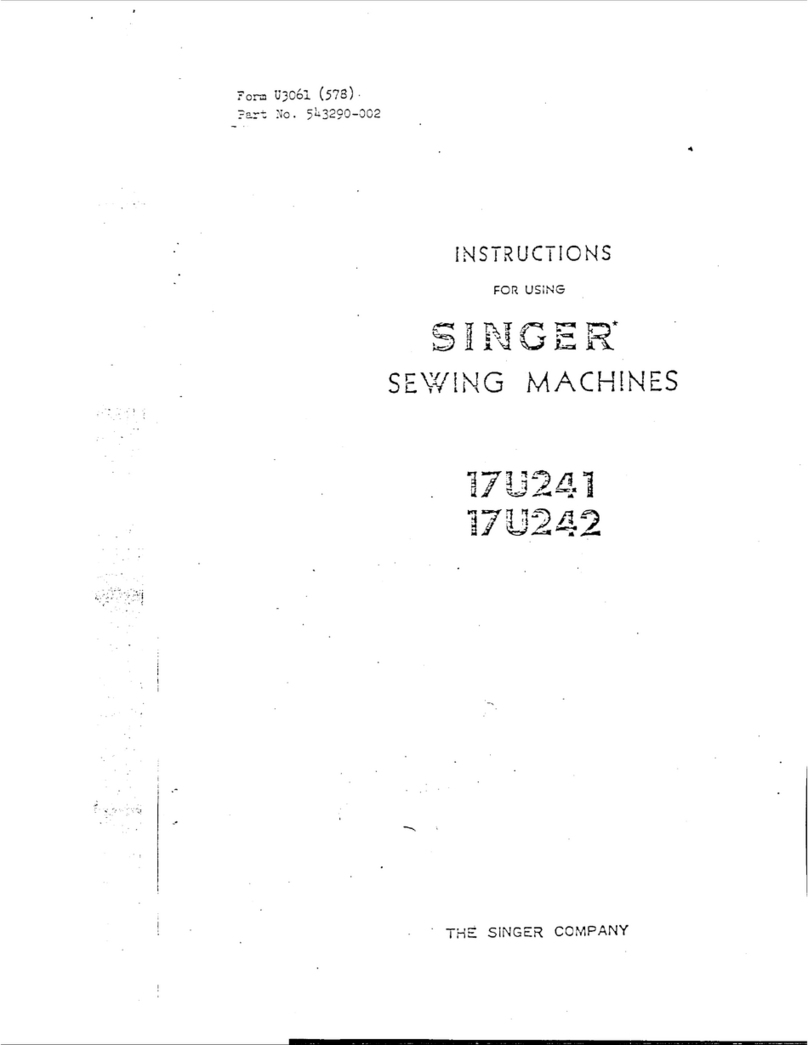3
1. DİKİŞ MAKİNENİZİ TANIYIN
Makine tanimlamasi --------------------------------------------------6 - 7
Aksesuarlar -------------------------------------------------------------8 - 9
2. DİKİŞE BAŞLAMA
Makinenin dengelenmesi ----------------------------------------10 - 11
Makinenizin kurulmasi --------------------------------------------10 - 11
Makara pimleri ----------------------------------------------------- 12 - 13
Masura sarma ------------------------------------------------------ 14 - 15
Masura ipliğinin takılması --------------------------------------- 16 - 17
Üst ipliğin takılması ----------------------------------------------- 18 - 19
Otomatik iğne takmanın kullanılması ---------------------- 20 - 21
Masura ipliğinin alınması ---------------------------------------- 22 - 23
Kontrol panelı fonksıyonlari ------------------------------------ 24 - 29
Dikiş uzunluğu ve genişliği hızlı başvuru tablosu --------- 30 - 33
Düz dikiş ------------------------------------------------------------- 34 - 39
Dikişlerin düz tutulmasi, Kare bir köşeyi dönmek,
Ters dikiş, Fermuar dikme ve biyeleme
El görünümlü kapitone dikiş ------------------------------------ 38 - 39
Otomatik bağlanti fonksiyonlu düz dikiş --------------------- 38 - 39
Zigzag dikiş --------------------------------------------------------- 40 - 41
Dikiş genişliğinin ve uzunluğunun ayarlanmasi,
Saten dikiş, Desenlerin yerleştirilmesi
Gizli dikiş, Kapaklı dikiş ----------------------------------------- 42 - 43
Çok dikişli zigzag, Fagot dikiş --------------------------------- 44 - 45
Streç dikişler -------------------------------------------------------- 46 - 55
Düz streç dikiş, Kenar bastırma dikişi, Rik rak dikiş,
Tüy dikişi, Bal peteği dikişi, Eğik overlok dikişi,
Battaniye dikişi, Türk dikişi, Dekoratif dikişi,
Kuvvetlendirilmiş kenar bastırma dikişi, Patchwork,
Sihirbaz dikişi, Çapraz dikiş, Rütbe dikişi, Nervür dikişi,
Sürsleme dikiş, Merdiven dikişi, Çift overlok dikişi,
Anahtar dikişi, Balık iskeleti dikişi,
Dekoratif desenler ------------------------------------------------ 56 - 57
Sürekli desenler --------------------------------------------------- 58 - 59
Fantezi desenleri -------------------------------------------------- 60 - 61
İÇİNDEKİLER
Düğme dikme ------------------------------------------------------ 60 - 61
İlik yapma ----------------------------------------------------------- 62 - 67
İlik açmaayağının kullanılması, Yöntem, Kordonlu ilikler
Elle ilik açma ------------------------------------------------------- 68 - 69
3. NAKIŞ DİKİŞİ İÇİN HAZIRLIK
Nakış ünitesini bağlamadan önce ---------------------------- 70 - 73
Nakış ayağını takma, Masura ipliğinin takılması,
Üst ipliğin takılması, Masura ipliğinin alınması,
Uzatma tablası, Transport dişlisi kontrolü
Nakış ünitesini bağlama ----------------------------------------- 74 - 75
Nakış dikişi için hazırlık ------------------------------------------ 76 - 77
Malzemenin ve dengeleyicinin kullanılması ---------------- 78 - 81
Kasnağı takmadan önce makinenin hazırlanması -------- 82 - 83
Nakış kasnağının takılması ve çıkartılması ---------------- 82 - 83
Yazilimin kurulumu ------------------------------------------------ 84 - 87
Nakış ünitesi bağlıyken çalıştırma düğmeleri -------------- 88 - 89
Çalıştırma düğmeleri, İplik tansiyonu kontrolü
Sorun giderme ----------------------------------------------------90 - 101
4. BİLMENİZ GEREKEN DİĞER HUSUSLAR
Baskı ayağı kaldırma kolu -------------------------------------90 - 101
Transport dişlisi kontrolü ------------------------------------- 102 - 103
Serbest elle dikişe dönüştürme ----------------------------- 102 - 103
Üst iplik tansiyonunun ayari --------------------------------- 104 - 105
Baskı ayağının değiştirilmesi -------------------------------- 104 - 105
Çalıştırma düğmeleri ------------------------------------------ 106 - 107
İğne, iplik ve kumaş tablosu --------------------------------- 108 - 109
Performans kontrol listesi -------------------------------------110 - 111
Çağanoz alanının ve transport dişlilerinin temizlenmesi -- 112 - 113
Alin kapağinin yağlanmasi ----------------------------------- 114 - 115
Özel aksesuarlar ----------------------------------------------- 116 - 117
Faydali mesajlar ------------------------------------------------ 118 - 121
Dikiş makinesi
Boyutlar: 428 mm × 307 mm × 294 mm
Ekipman ağırlığı: 10 kg
Nakış işleme ünitesi
Boyutlar: 433.5 mm × 269.5 mm × 133 mm
Ekipman ağırlığı: 2.26 kg
Nominal Voltaj: 230V ~
Nominal Frekans: 50Hz
Nominal giriş: 60W
Nominal dış hava sıcaklığı: 15 - 35°C
Akustik gürültü seviyesi: 70 db’den (A) daha az
Avrupa modeli için
7468
1. MAKİNENİZİ TANIMA
Makinenin tanıtılması ....................................4
Aksesuarlar....................................................5
Makinenin ayarlanması..................................6
Makara pimleri Baskı ayağı kaldırma kolu,............7
Kumaş dişlisi düğmesi ..................................7
Serbest kol dikişine dönüştürme ..................8
Masuranın sarılması ......................................9
Masura ipliğinin takılması ............................10
Üst ipliğin takılması......................................11
Otomatik iğne iplik takıcı özelliğinin
kullanılması ..............................................12
Masura ipliğinin tutulması ............................13
İğne, iplik ve kumaş tablosu ........................14
Üst iplik gerginliğinin ayarlanması ..............15
Baskı ayağının değiştirilmesi ......................15
Kontrol paneli fonksiyonu ............................16
Geri Dikiş Düğmesi......................................19
2. DİKİŞE BAŞLAMA
Dikiş uzunluğu ve genişliği hızlı
başvuru tablosu ........................................20
Düz dikiş ......................................................24
Fermuar takma ve biyeleme ..................25
El Şekilli kapitone dikiş dikme ....................25
Zigzag dikiş..................................................26
Dikiş genişliğinin ve uzunluğunun ayarlanması,
Saten dikiş Desenlerin yerleştirilmesi ............26
Gizli dikiş ....................................................27
Çoklu zig-zag dikiş, Dalgalı kenar dikişi ......28
Esnek (rikrak) dikişler ..................................29
Düz esnek (rikrak) dikiş, SürŞle Dikiş,
Civankaşı dikiş, Rik-rak dikiş ......................29
Nervür dikiş, Battaniye dikişi,
Bal peteği dikişi, Süsleme dikişi ..................30
Merdiven dikişi, Çift overlok dikişi,
Gezdirme dikiş, Çapraz dikiş ......................31
Meyilli sürŞle dikişi, Meyilli nervür dikişi,
Anahtar dikişi, Balık iskeleti dikişi................32
Yırtık dikişi, Sağlamlaştırılmış sürŞle dikişi,
Sihirbaz dikişi, Rütbe dikişi..........................33
Dekoratif desenler ......................................34
Desen dikişi ile ilgili ipuçları ........................34
Sürekli desenler ..........................................35
Fantezi desenleri ........................................36
Düğme dikme ..............................................36
İlik açma ......................................................37
Otomatik ilik açma ......................................37
Kordonlu ilikler, Elle ilik açma......................39
3. MAKİNENİN BAKIMI
Yatak alanının ve kumaş dişlilerinin
temizlenmesi ............................................40
4. DİĞER BİLGİLER
Saten dikiş ayağı, Çift iğne..........................41
Düz Dikiş İğne Pozisyonu............................42
5. PERFORMANS KONTROL LİSTESİ
....................................................................43
